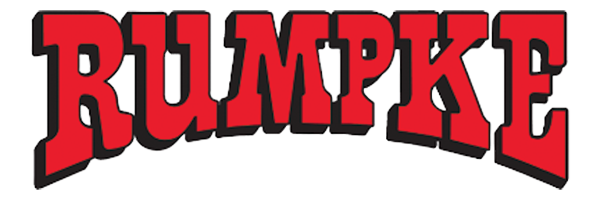Green Miles
More than 1,500 Rumpke trucks hit the streets daily. These vehicles travel millions of miles and use unimaginable amounts of diesel fuel throughout the year. Beginning on July 18, 2011, Rumpke introduced 10 new trucks powered by compressed natural gas (CNG) marking the start of a greener fleet.
Since 1986, Rumpke has recovered landfill gas from Rumpke Sanitary Landfill in Colerain Township to create natural gas proving heat and energy for nearly 25,000 local homes. In July, Rumpke will begin compressing natural gas to fuel its green fleet.
Rumpke partnered with Clean Fuels Ohio and received $800,000 in grant funding from the U.S. Department of Energy Clean Cities Ohio. The grant made the decision to purchase 10 CNG trucks more realistic as it reduced the total cost of $3.1 million.
Rumpke fleet buyers researched alternative engines and studied the functionality of the CNG trucks to ensure they are equipped for the demands a typical rear load truck encounters. The trucks will collect residential waste in Fairfield, Hamilton, Blue Ash and Springdale, Ohio. Rumpke will monitor the success of this greener alternative to collecting trash and consider additional routes as opportunities become available.
100 Years On The Road
Day after day, mile after mile, dependable garbage trucks haul heavy loads of history picked up from homes and businesses. This year, the garbage truck itself celebrates a historic milestone.
2onaTrk2012 marks the 100th anniversary of the garbage truck. Before automobiles, garbage was collected by wagons. When vehicles began hitting streets, garbage collectors switched to standard open top trucks. These were the first type of trucks Rumpke used during early years of operation. However, working with these trucks was challenging. Not only was trash not contained, but collection was very difficult for workers who had to heave heavy cans or bags of trash shoulder height to fill the trucks.
By the 1920s, inventors unveiled a new truck featuring round compartments and corkscrews to lift loads into the back of the truck. Henry Ford pioneered his very own line of trucks as well as other manufacturers throughout North America and Europe. Trucks featuring a hopper, which used a cable system to pull the trash toward the front of the truck, were introduced later in the decade.
The dumpster system also emerged in the 1920s, with trucks featuring George Dempster’s mechanical tipper, the Dempster-Dumpster, to unload waste containers.
In the 1950s the Dempster Dumpmaster was invented providing a commercial garbage collection machine which picked up large waste containers from businesses. Bill and the late Tom Rumpke formed Rumpke Container Service in the 1960s to service larger containers for commercial accounts.
The standard rear load truck of today rolled onto the roads a couple years later, and Rumpke began using these trucks for its residential routes. Today’s rear load trucks pick up between 400-600 stops before filling.
Just as garbage trucks evolved, Rumpke adjusted to keep customer costs low and safety and efficiency high, and today Rumpke’s fleet of 1,700 vehicles includes a variety of truck types ranging from open top trucks to the latest technology available, including automated collection trucks.
CNG Truck 004Technology continues to shift and garbage trucks are getting greener. In 2011, Rumpke added 10 compressed natural gas collection trucks to its fleet. These residential trucks run on greener gas generated by Rumpke Sanitary Landfill, and 11 more will be added in 2012.
Over the years Rumpke has proudly used this tool of trade. Happy 100th anniversary garbage truck, you have been with Rumpke for the long haul.
Rumpke Grows Natural Gas Fleet
Did you know 15 of Rumpke’s collection trucks are fueled by garbage? Rumpke continues to replace older, diesel trucks with newer models powered by natural gas produced from the landfill.
PrintIn 2011, 10 compressed natural gas (CNG) Rumpke trucks hit the street—trucks that are fueled by natural gas produced at Rumpke Sanitary Landfill in Colerain Township, Ohio. The trucks were part of $3.1 million pilot project with Clean Fuels Ohio that included purchasing the trucks and constructing a slow-fill, compressed natural gas fueling station.
The CNG trucks not only offer another use for landfill gas, but also a 21-26 percent reduction in greenhouse gases.
Using one of the world’s largest landfill gas energy recovery systems, Rumpke removes methane from Rumpke Sanitary Landfill and converts it into natural gas for up to 25,000 homes. Although, the gas is not directly piped to Rumpke’s new CNG filling station, the station is one of the first hits on Duke Energy Corp.’s lines running from the landfill gas recovery system, making it possible for garbage trucks to run on the tri-state's garbage. In the future the gas lines will travel directly from the landfill gas recovery plants to the filling stations.
Rumpke is monitoring fuel economy, reliability, dealer support and driver and mechanic feedback to determine if this system offers a useable and efficient fuel alternative.
According to Natural Gas Vehicles for America there are about 1,000 natural gas vehicle (NGV) fueling stations in the United States and about half of them are open to the public. In the United States, about 30 different manufacturers produce 100 models of light, medium and heavy-duty vehicles and engines.
Contact Rumpke Corporate Communications for more information on this subject.
